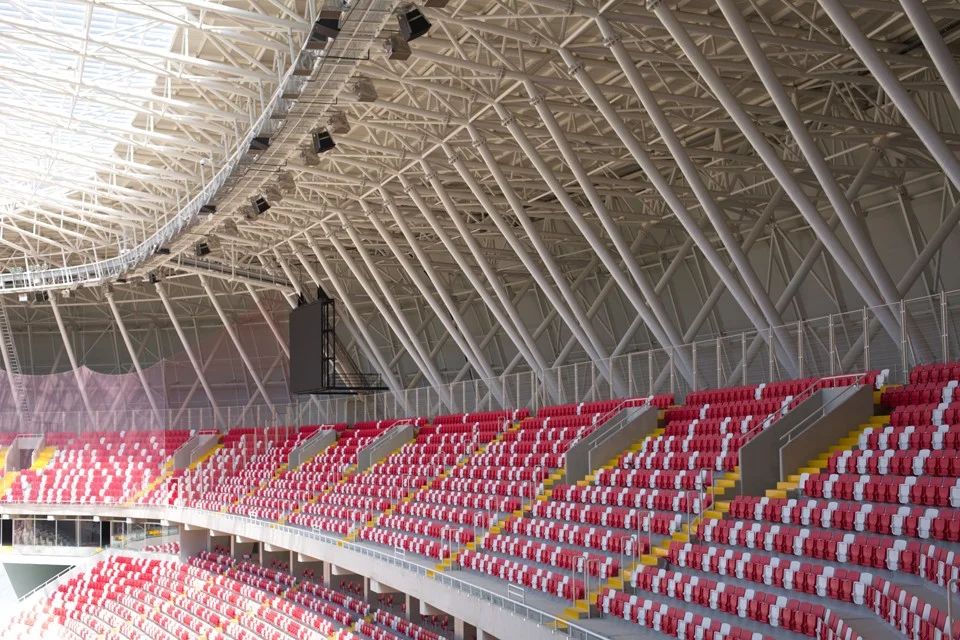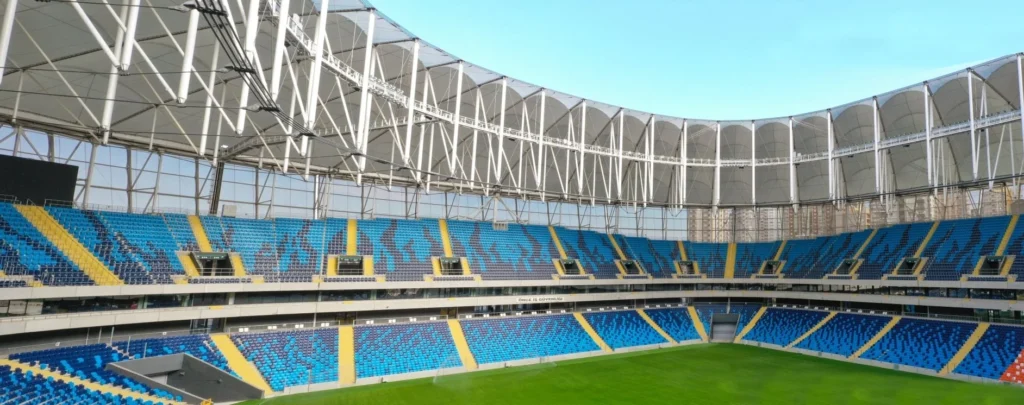Have you ever walked into a massive stadium and wondered why the fixed stadium seats are almost always made of plastic? At first glance, it seems like a simple choice, but for professionals managing venues, architects, or project companies, this decision goes far beyond surface-level reasoning. Plastic seating has become the global standard for arenas and auditoriums because it delivers a rare combination of practicality, durability, and cost-effectiveness. Let’s dive deeper into why the industry keeps turning back to plastic, and why these seats keep proving themselves project after project.
Table of Contents
Fixed Stadium Seats – The Core of Modern Venues
The heart of every sports arena or concert hall beats through its fixed stadium seats. They’re not just about providing a place to sit; they shape the entire audience experience, impact long-term maintenance, and affect project budgets. Professionals who oversee venue planning know well that these seats must withstand tens of thousands of spectators over years of events.
But here’s the question: could other materials replace plastic effectively? While wood, metal, or even hybrid designs have been tested, none of them consistently deliver the same balance of weight, resilience, and cost efficiency. That’s why plastic remains the winning choice.
Engineering Consistency Matters
Plastic allows manufacturers to deliver precise molding, consistent color batches, and a unified design language across thousands of units. For project managers, this reliability avoids unexpected variations and makes installation far smoother.

Fixed Stadium Seating and Its Long-Term Value
When projects involve fixed stadium seating, decisions are never short-term. Venue owners think in decades, not years. Plastic delivers on this expectation because it holds up under repeated stress, climate fluctuations, and cleaning procedures.
Why Plastic Stadium Seats Reduce Replacement Cycles
Metal may dent, wood may warp, but plastic maintains its shape season after season. This means fewer replacements, lower downtime for renovations, and more predictable operating costs. For purchasing managers, this translates into significant savings in lifecycle budgets.
Have you ever calculated how much downtime a single seating renovation can cost a stadium operator? The answer usually shocks venue owners, and that’s why plastic’s longevity keeps winning the bid.
Plastic Stadium Chairs – A Global Standard
Across continents, plastic stadium chairs have been installed in football stadiums, arenas, and auditoriums of every scale. Why? Because they adapt so well to different climates and usage patterns.
Adapting to Climate Demands
Plastic’s resistance to UV rays and humidity has made it especially reliable for outdoor installations. Whether under scorching sun or constant rain, plastic doesn’t corrode like metal or crack like untreated wood.
And here’s a practical question: can plastic really stay vibrant after years of outdoor exposure? The answer is yes—when UV-stabilized additives are used during production, color fading becomes minimal, extending the visual appeal for decades.
Durable Venue Seats for High-Traffic Events
Professional buyers and architects often evaluate durable venue seats with one thought in mind: endurance. Stadiums don’t just host sports games; they accommodate concerts, political rallies, and community events. Each one puts different stress levels on seating infrastructure.
Load-Bearing Strength
Modern plastic formulations aren’t the fragile versions of decades past. Reinforced polypropylene or high-density polyethylene models undergo rigorous load testing, withstanding hundreds of kilograms of force. In metric and imperial: many models are tested up to 300 kg (about 660 lbs).
This testing reassures decision-makers that the seats won’t just meet safety codes, but exceed them—avoiding liability risks for venue operators.

Outdoor Stadium Furniture Built for the Elements
When it comes to outdoor stadium furniture, plastic keeps outperforming alternatives because of its resistance to unpredictable weather conditions.
Simplifying Outdoor Maintenance
Venue managers often ask: what reduces annual maintenance costs most effectively? The answer repeatedly points back to plastic. Unlike metal, there’s no need for repainting against rust, and unlike wood, no sealing or polishing cycles are required. Regular cleaning with mild detergents is enough, which saves both time and money on staffing.
This simplicity means outdoor arenas in regions with tough climates can continue operations without frequent interruptions for repairs.
Resilient Arena Seats for Global Projects
Large-scale projects require resilient arena seats that don’t just last but also adapt to modern demands such as fire safety, modular installation, and compliance with international standards.
Fire-Resistant and Safety-Certified Designs
Plastic doesn’t mean compromising on safety. Many manufacturers now provide flame-retardant additives that meet stringent regulations across Europe, North America, and Asia. For project bidding, having these certifications is a huge advantage when competing internationally.
Have you noticed how some projects struggle during tender processes due to non-compliance in material safety? Choosing resilient plastic seating avoids this hurdle and keeps the project timeline smooth.
Industry-Wide Insights into Seating Materials
When professionals ask why plastic stadium seats remain so dominant, the industry answer blends technical and financial logic. Plastic offers fixed seating materials that check every requirement: long lifespan, consistent quality, low maintenance, and compliance adaptability.
Emerging Trends in Durable Furniture
With durable furniture trends, manufacturers are now integrating recycled plastics into stadium seating, answering sustainability demands without compromising performance. This not only reduces environmental impact but also aligns with global procurement policies increasingly prioritizing green solutions.
So, will the future of fixed arena options involve more composite designs or stick with proven plastic? The trend suggests a hybrid approach—plastic foundations enhanced by recycled compounds or smart design features.

Bringing It All Together
At the end of the day, the decision behind fixed stadium seats being made of plastic is not random—it’s the result of decades of engineering refinements, project experience, and operational learnings. From plastic seating advantages to outdoor venue benefits, this choice continues to serve stadium operators, architects, and procurement teams across the globe.
Next time you walk into a stadium and settle into a plastic chair, think about the layers of professional decisions behind it. These seats aren’t just about where people sit—they’re about ensuring venues operate smoothly for decades, while keeping costs, safety, and reliability in perfect balance.

